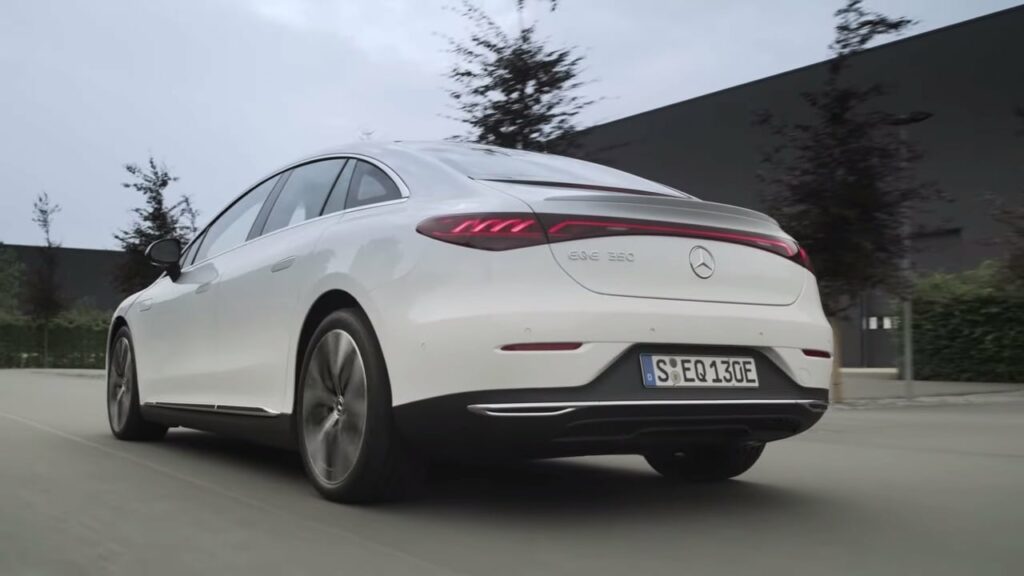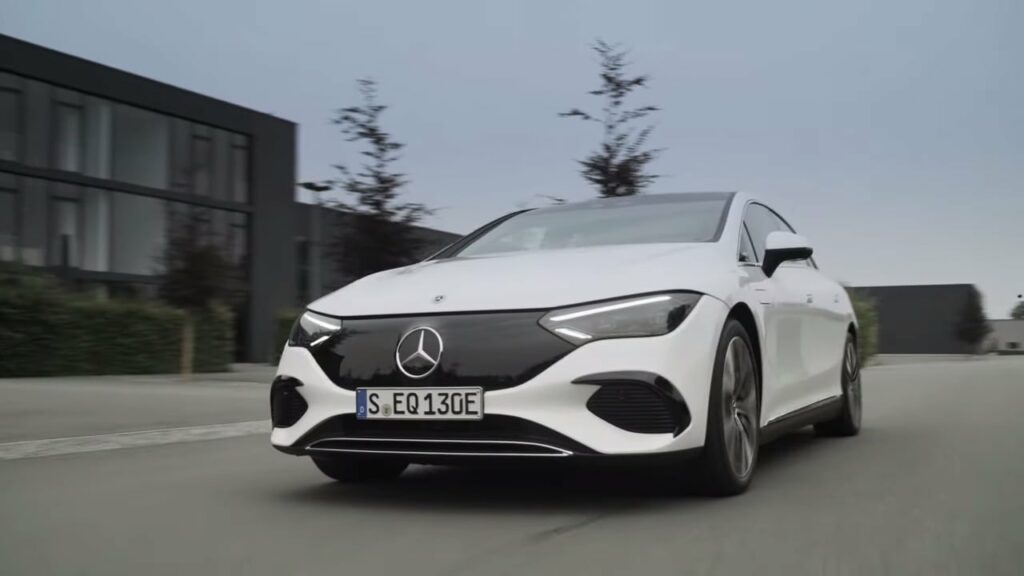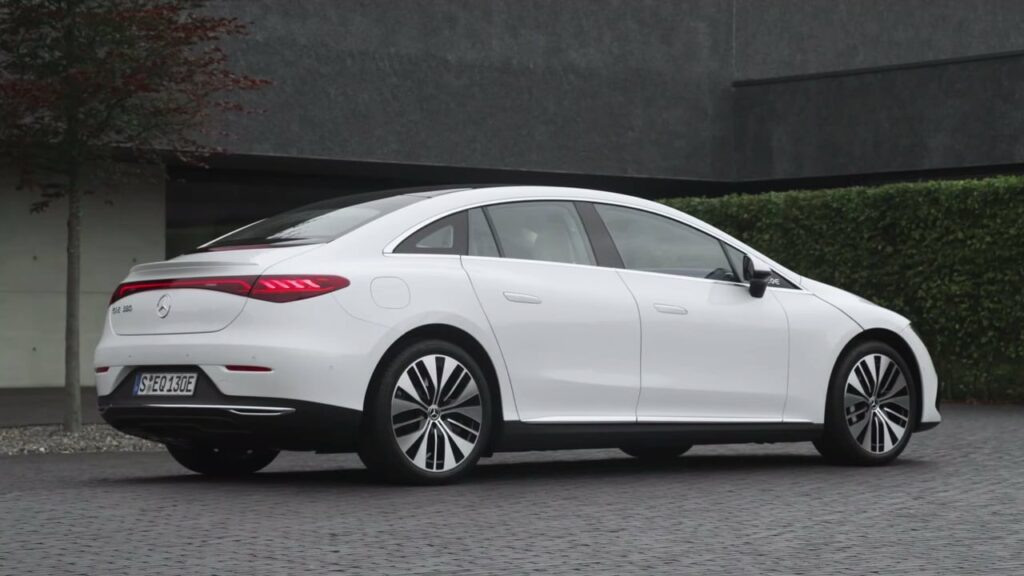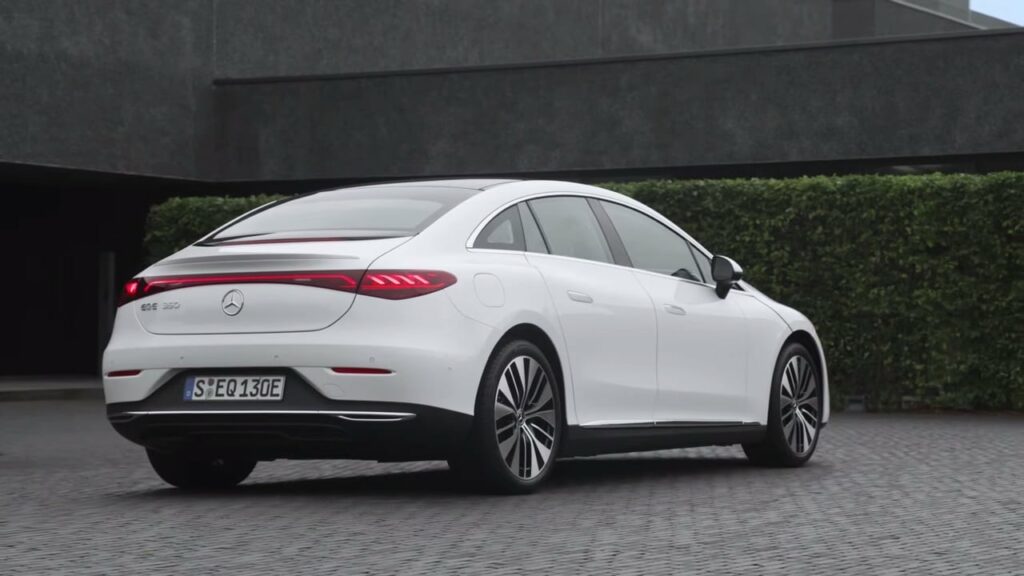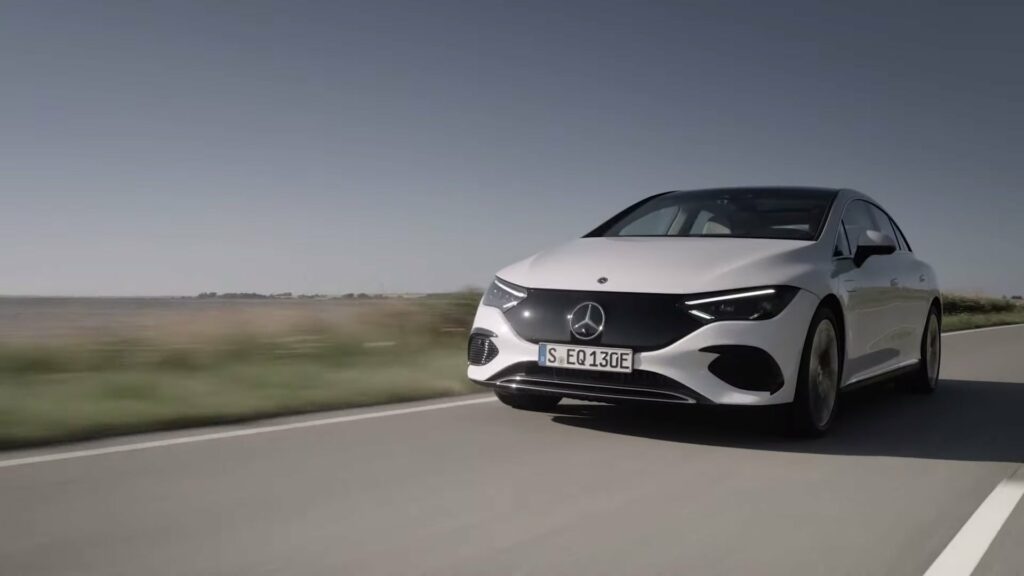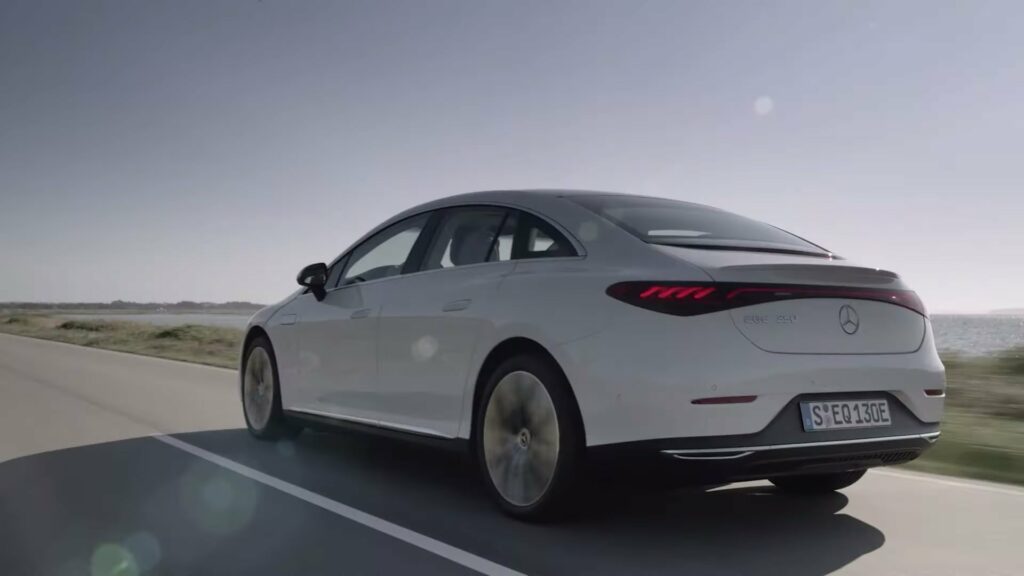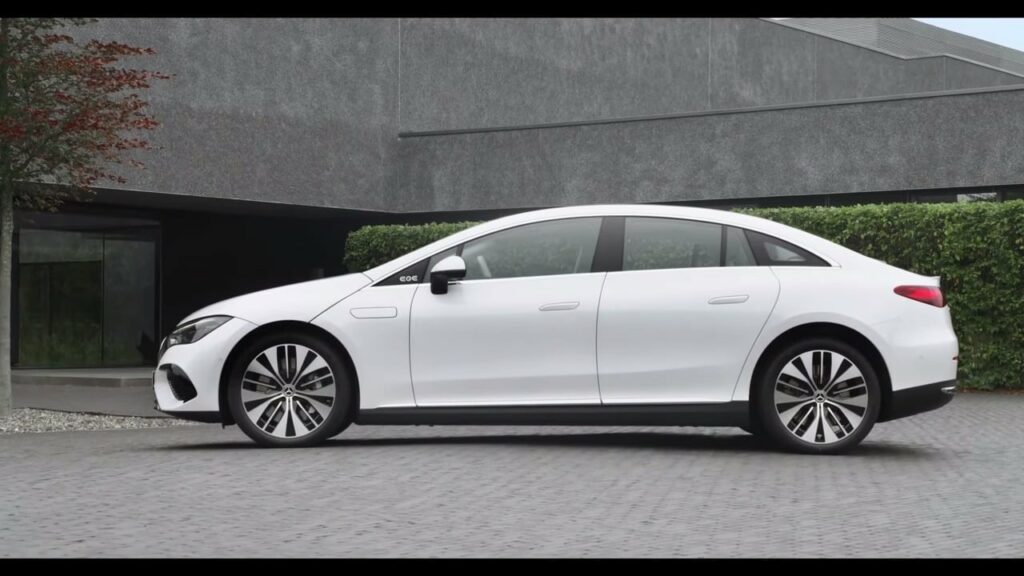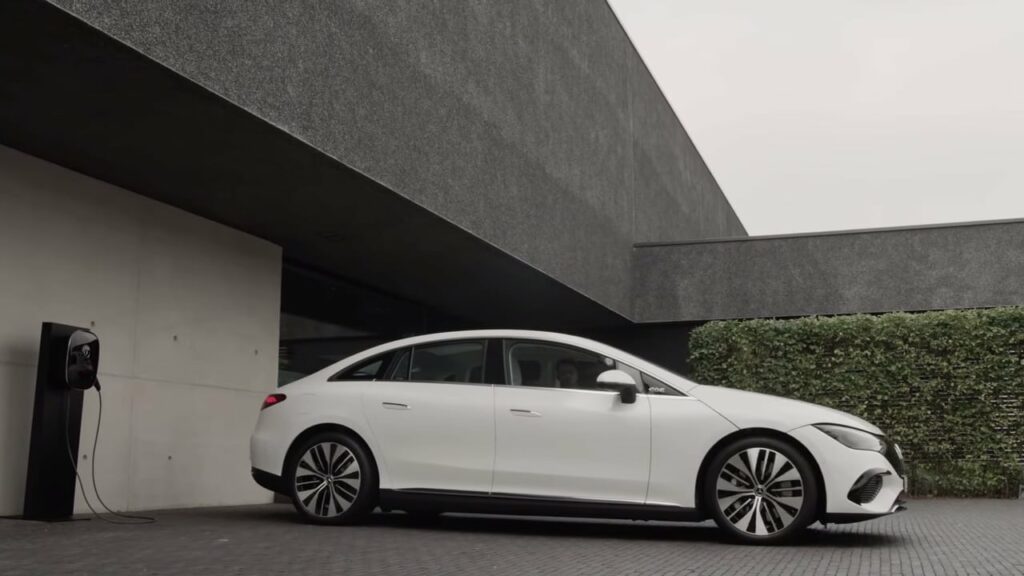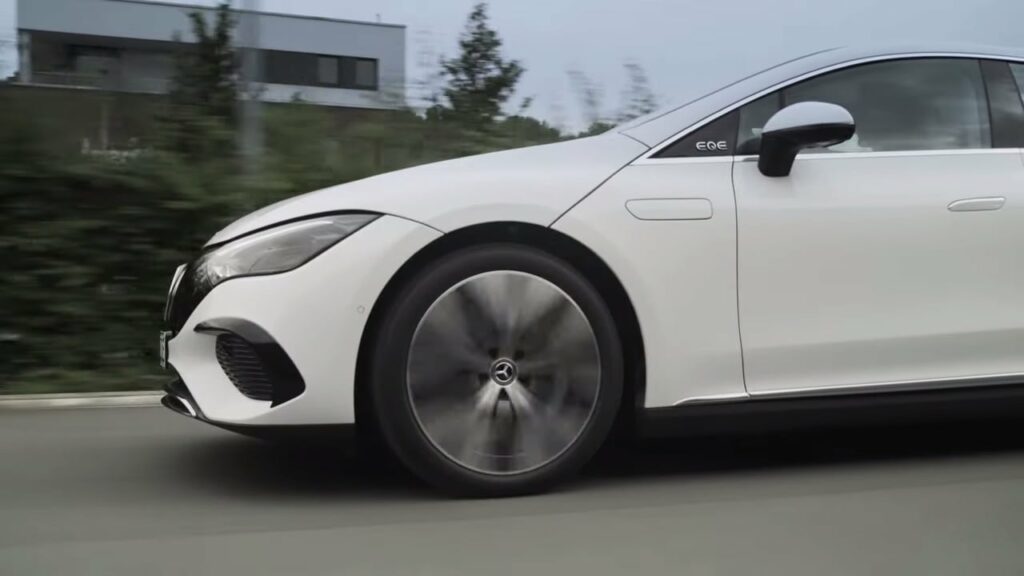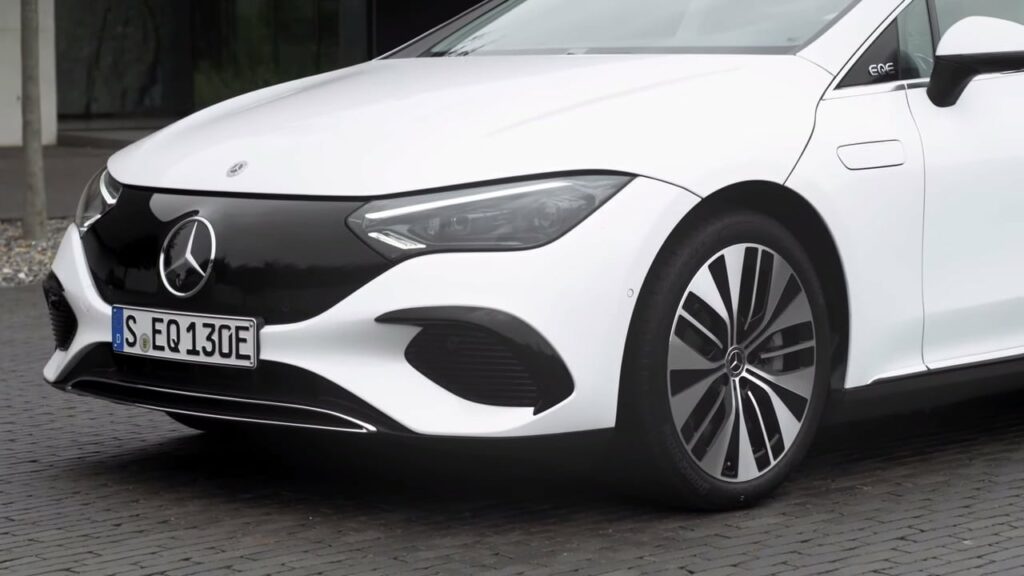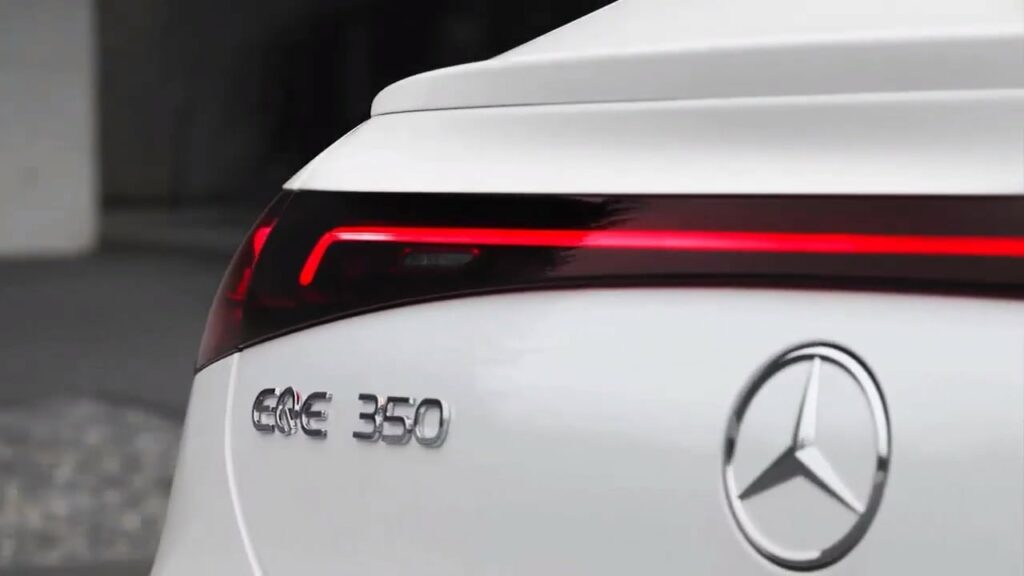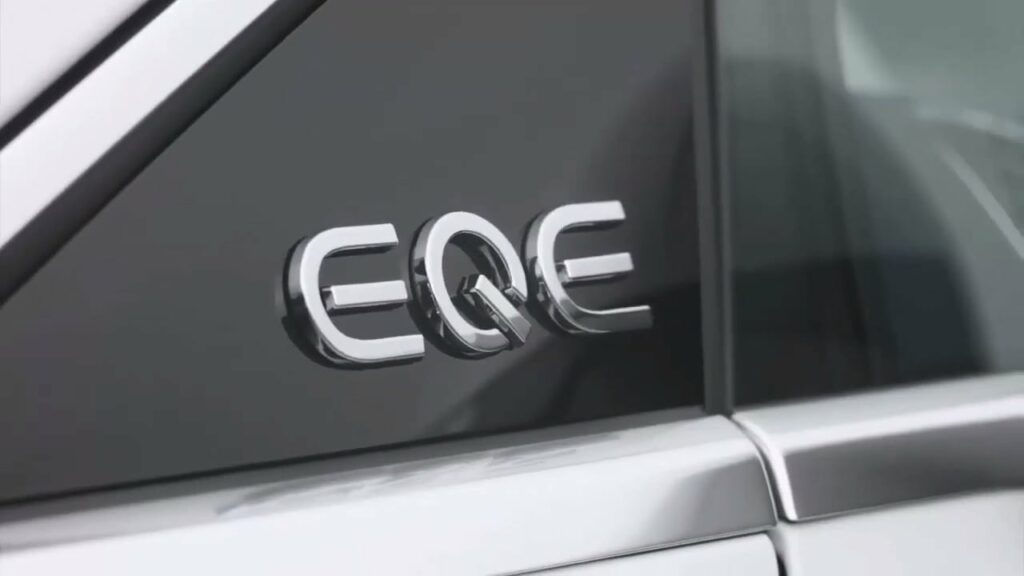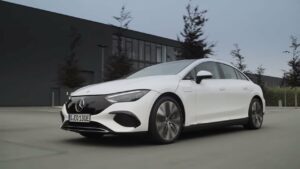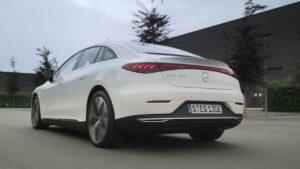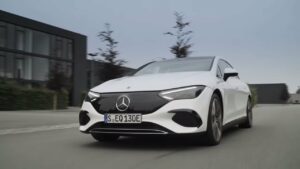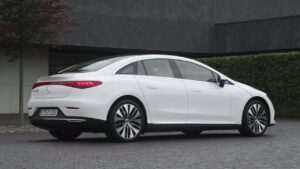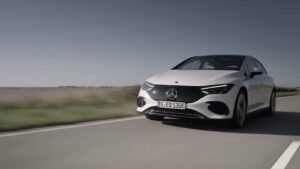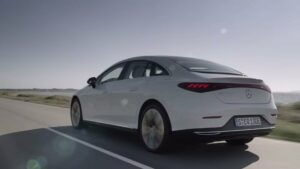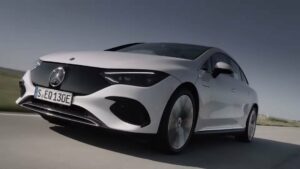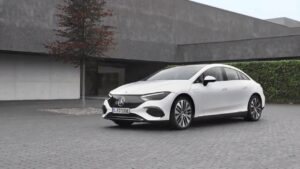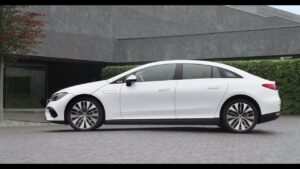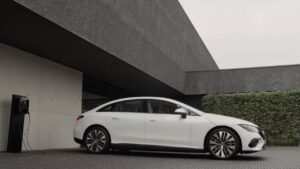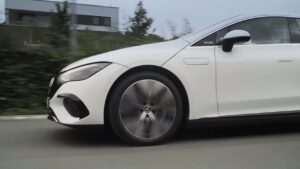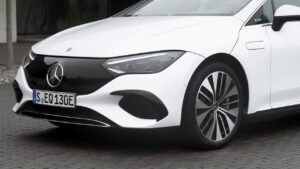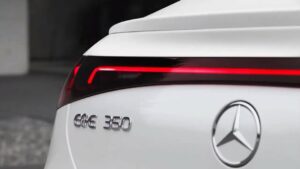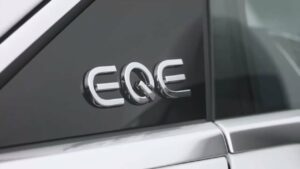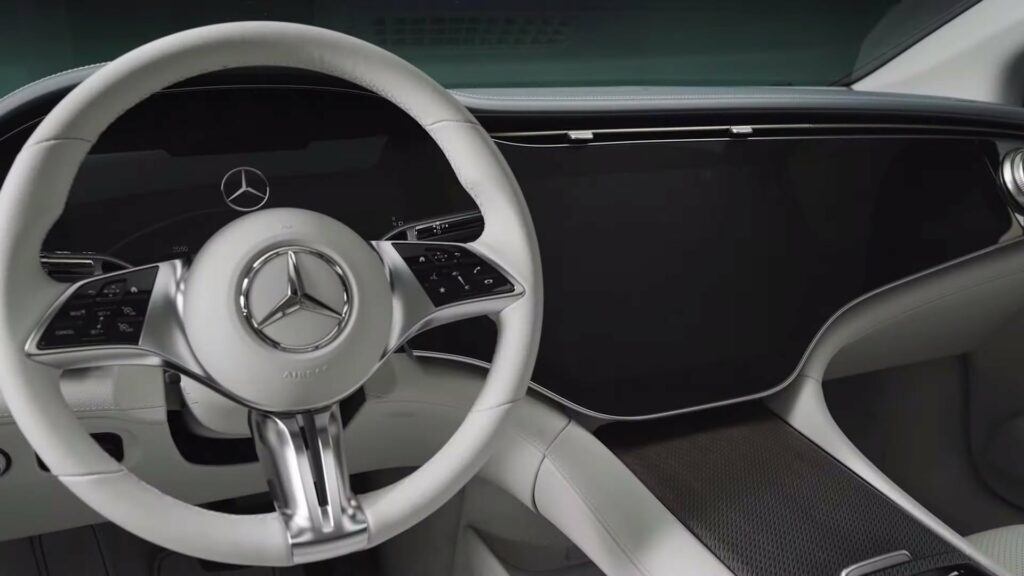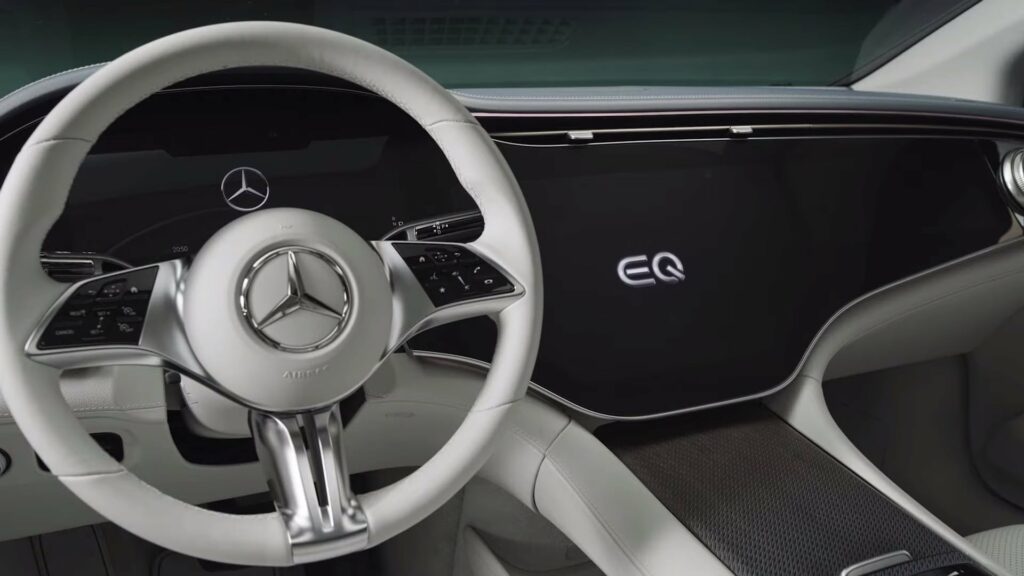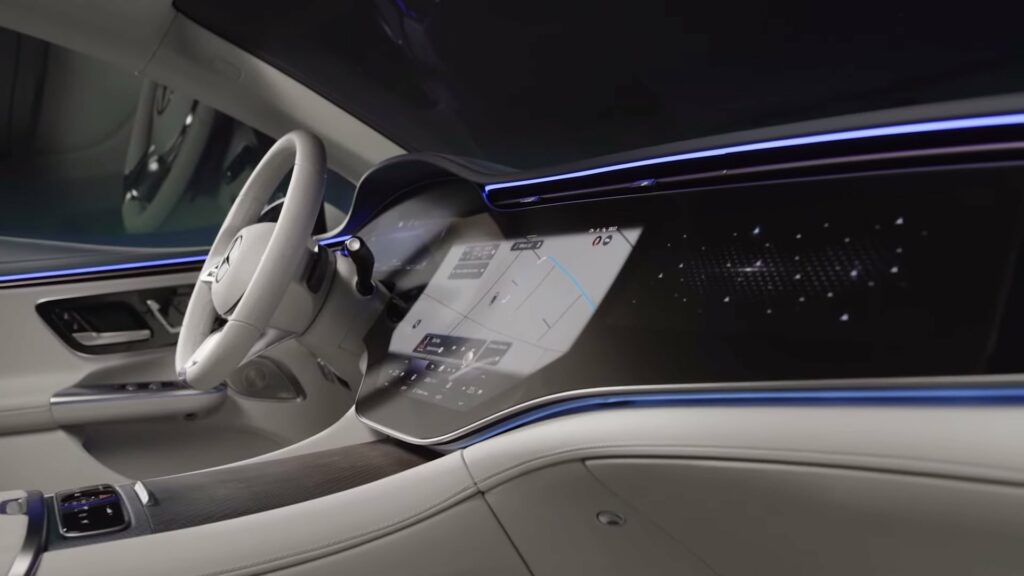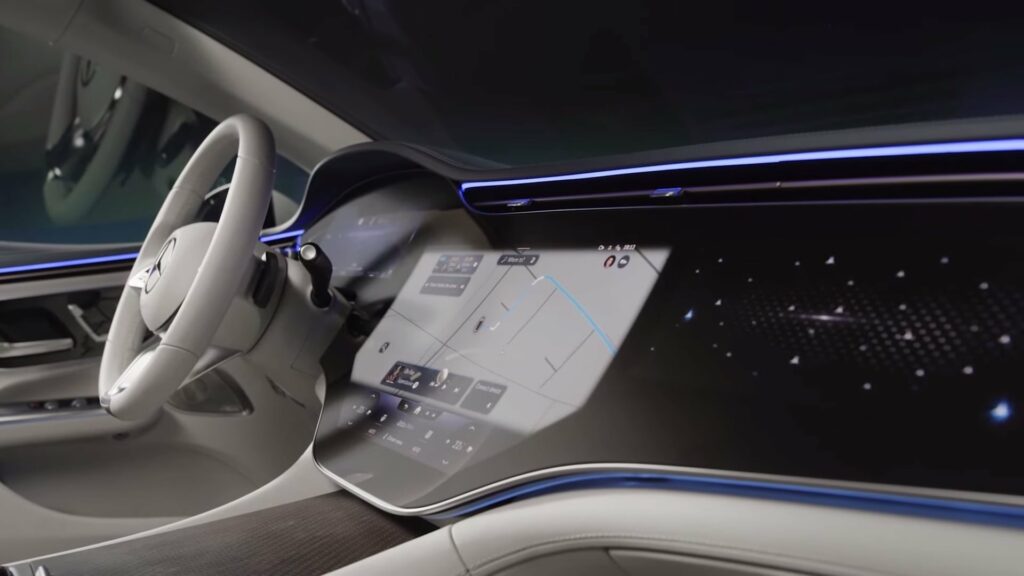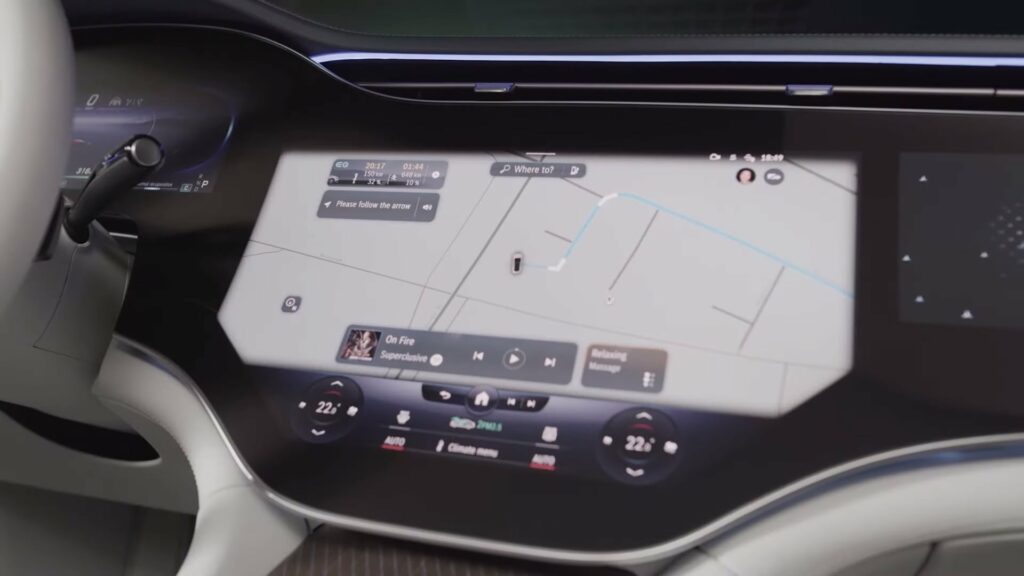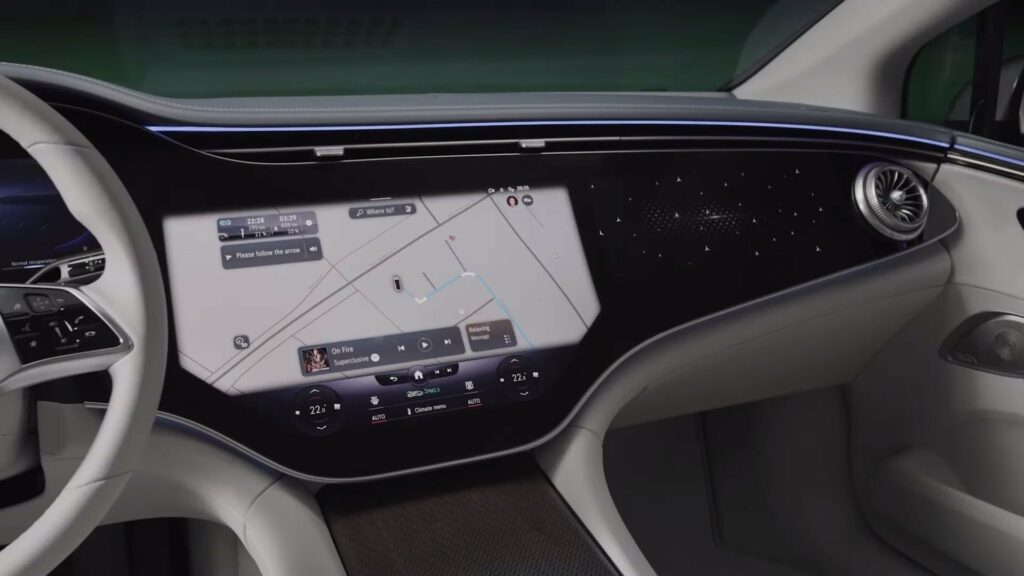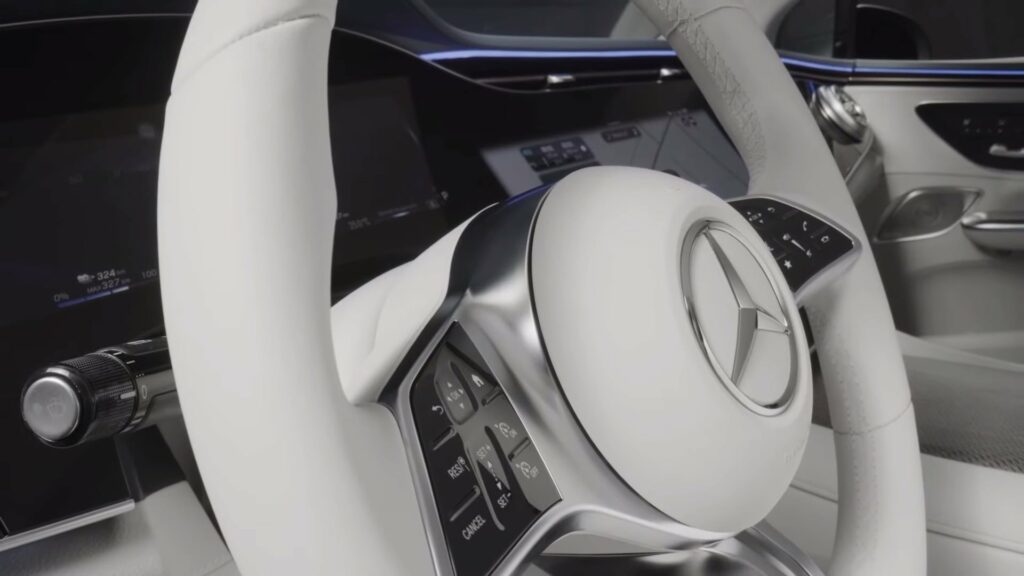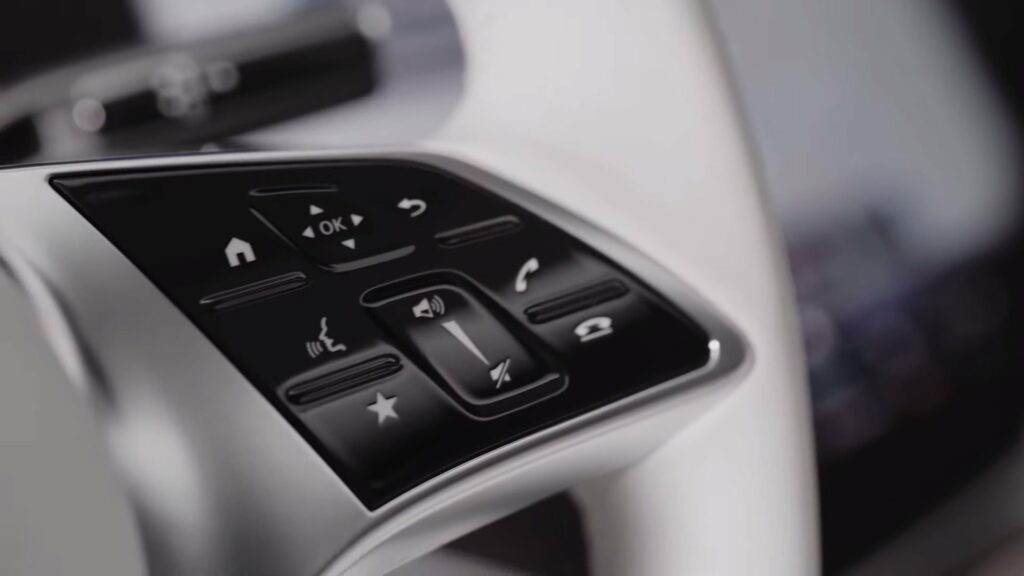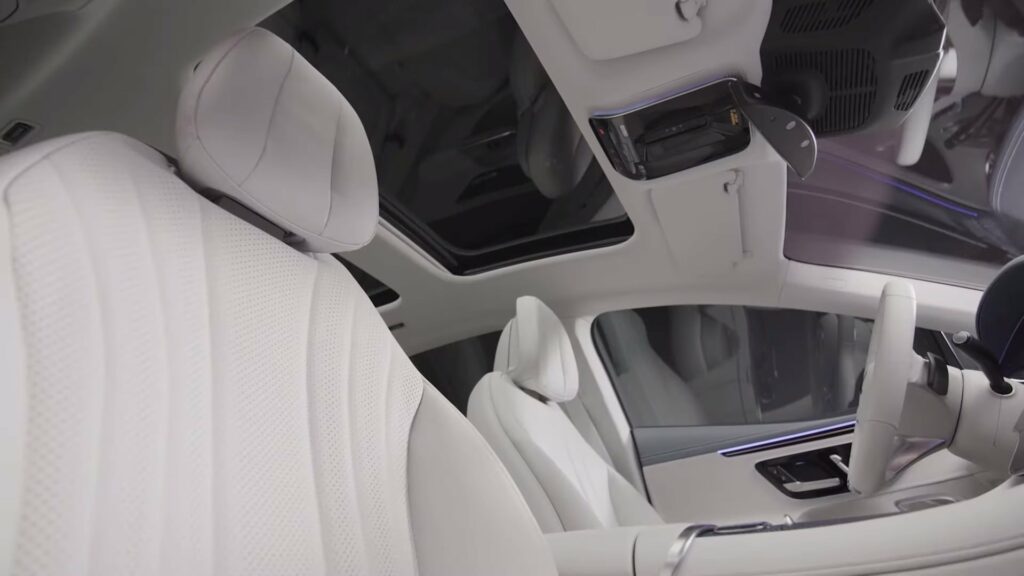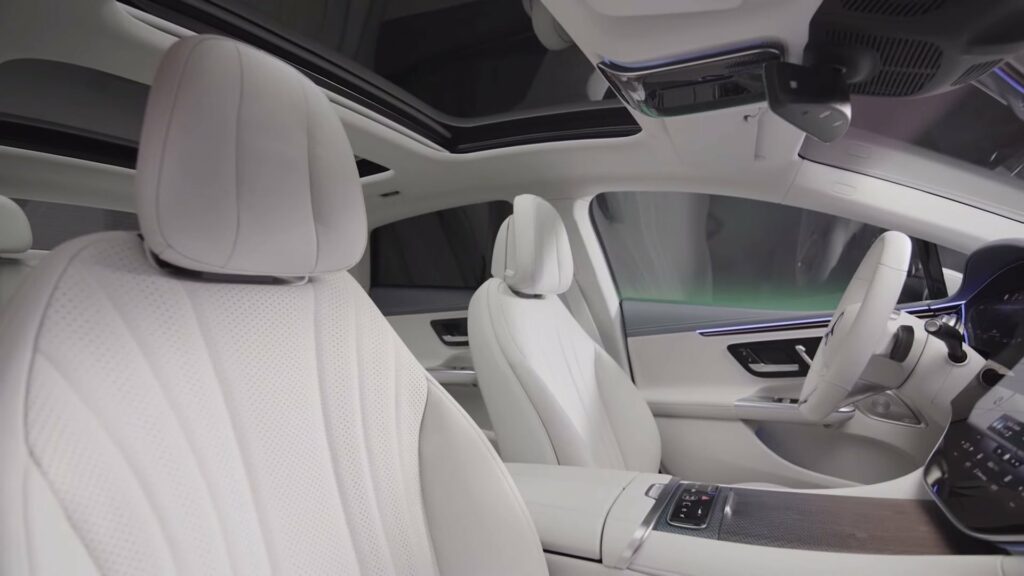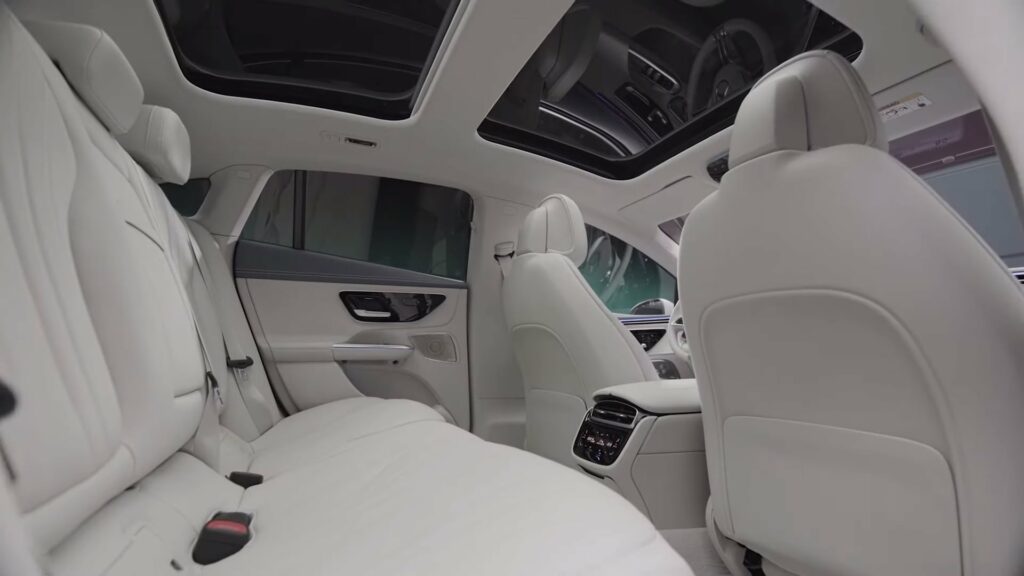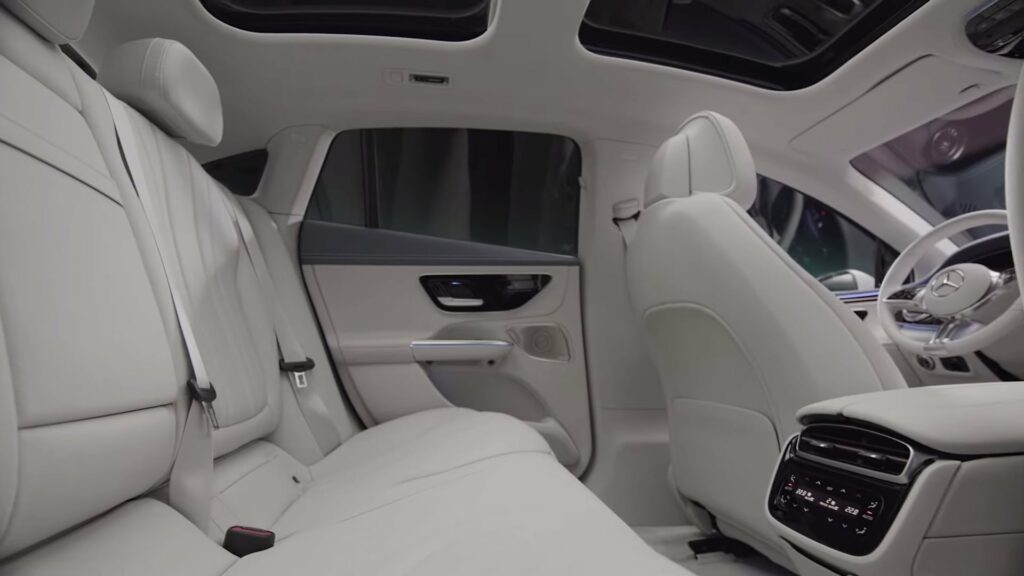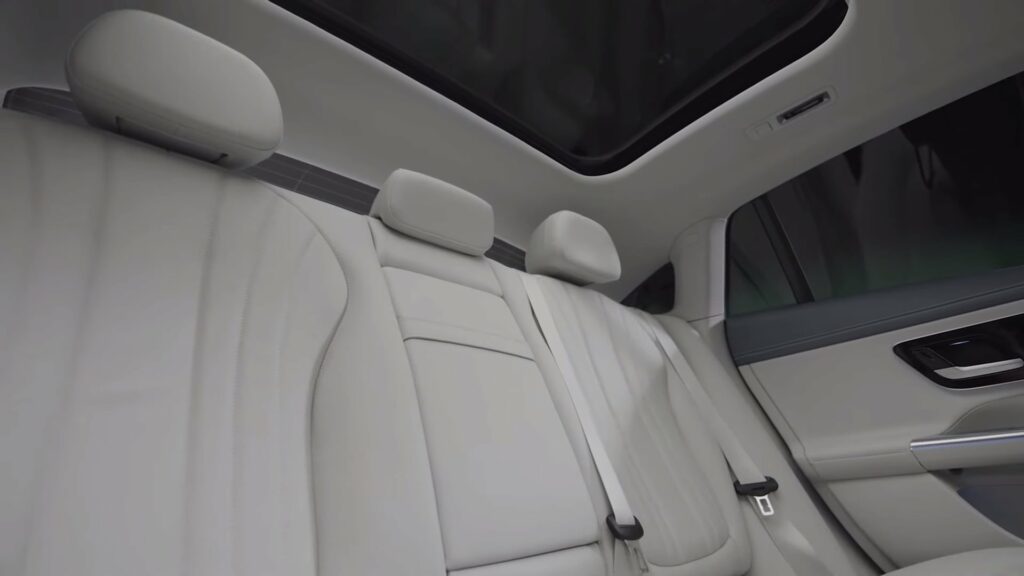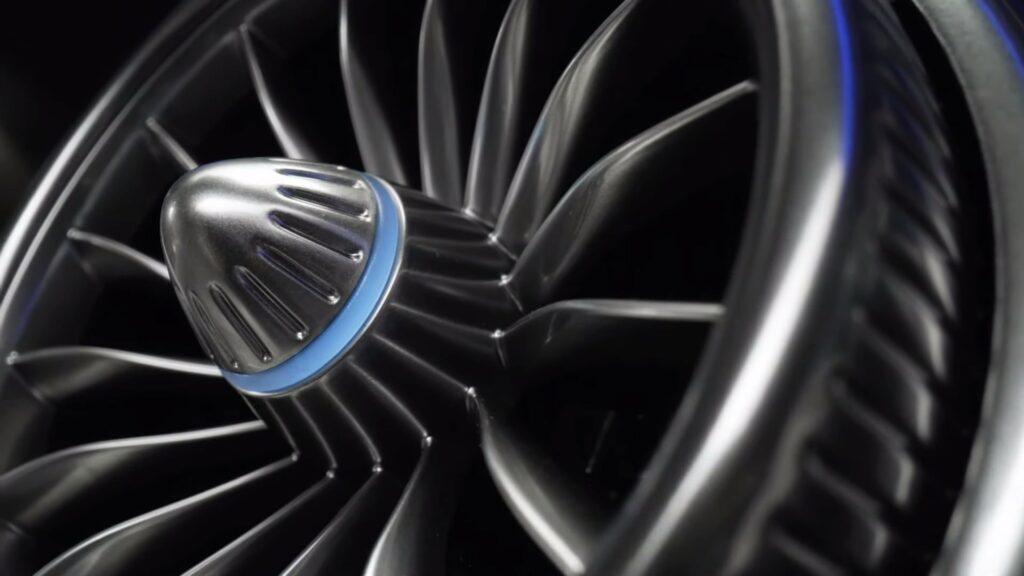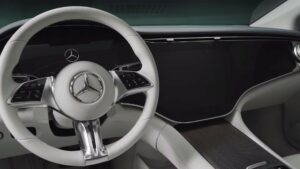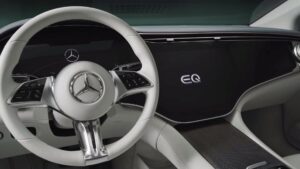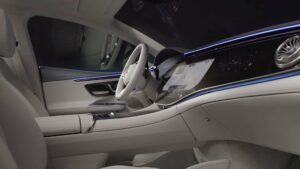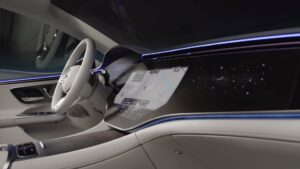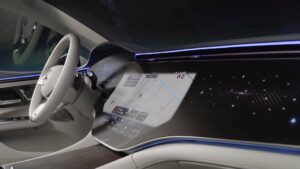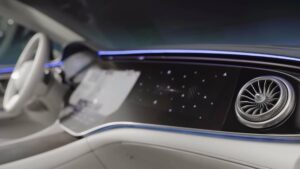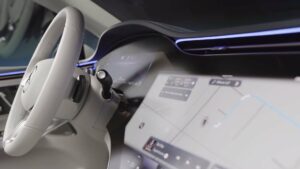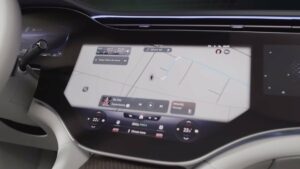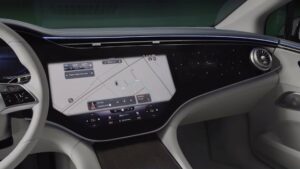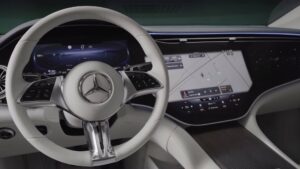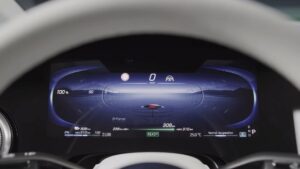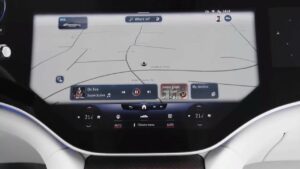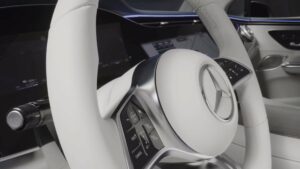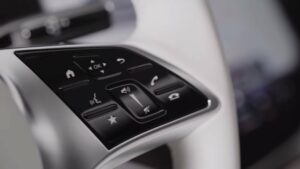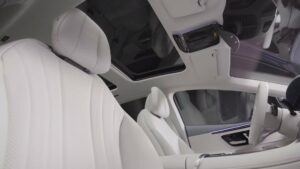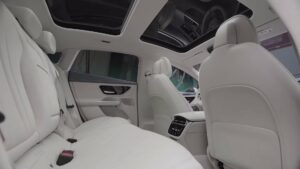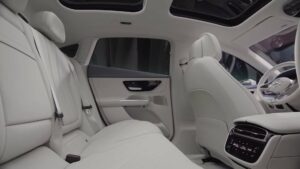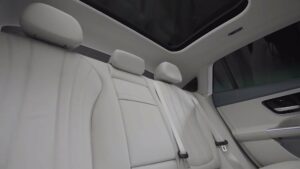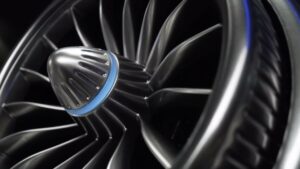Mercedes EQE 350
The Mercedes EQE 350 is an upcoming electric car from Mercedes-Benz, expected to be released in 2022. It will be part of the EQ range of electric cars and will be a mid-size luxury sedan similar in size to the E-Class.
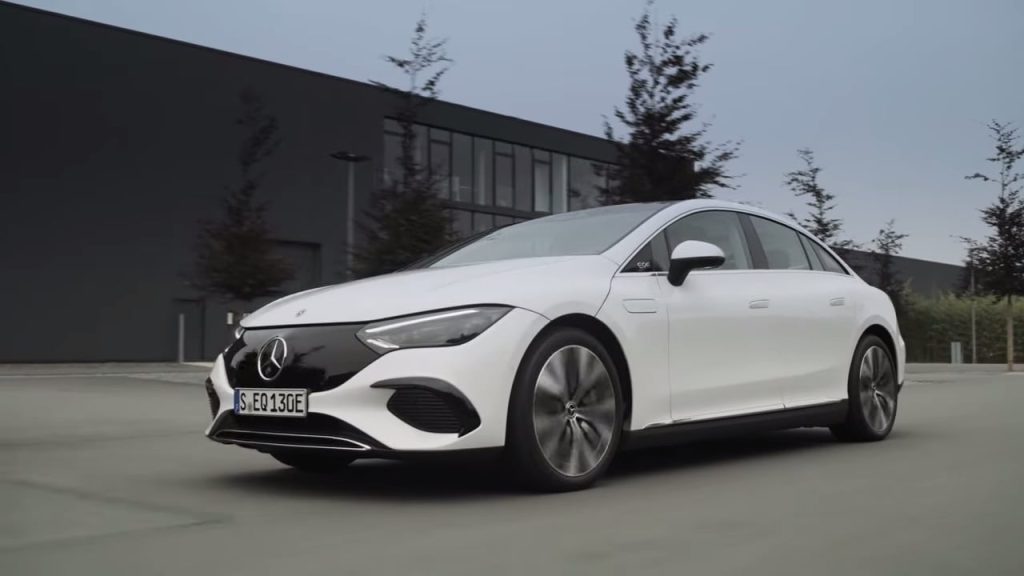
The EQE 350 will be equipped with a powerful electric motor with an output of about 215 kW, 530 Nm, and a range on a single charge of about 535 km, depending on driving conditions and other factors. It will also be equipped with a high-tech infotainment system, advanced driver assistance features, and a luxurious interior with first-class materials and finishes.
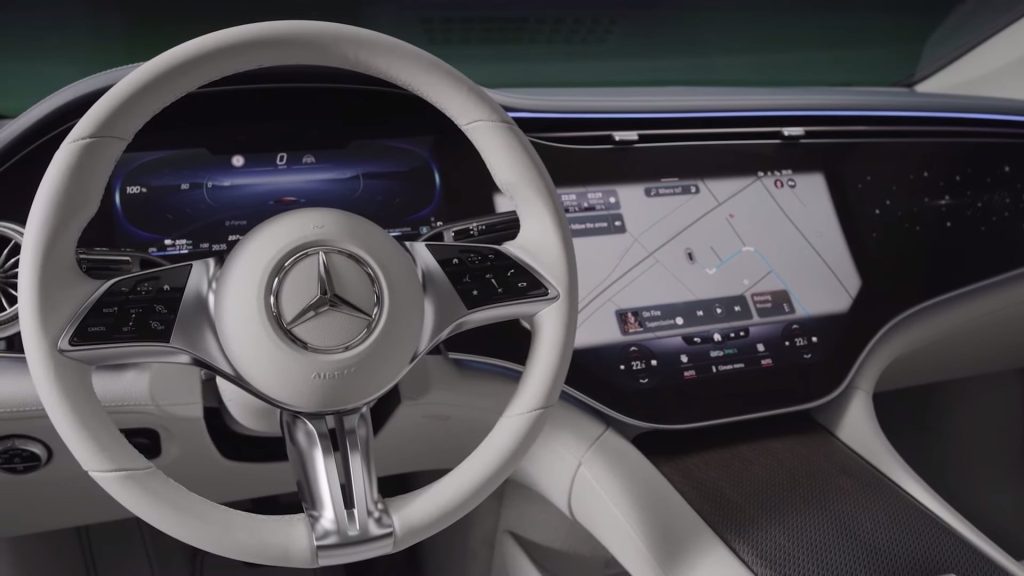
The EQE 350 will be built on Mercedes’ EVA platform, which is specifically designed for electric cars. This platform provides a low center of gravity, which should ensure a stable and comfortable ride, as well as ample space for passengers and cargo.
Overall, the Mercedes EQE 350 is expected to be a high-tech and luxurious electric car that will compete with other mid-size luxury electric cars such as the Tesla Model S and Porsche Taycan.
| Performance | |
| Acceleration 0 – 100 km/h | 6.0 sec |
| Top Speed | 160 km/h |
| Electric Range | 535 km |
| Total Power | 215 kW (292 PS) |
| Total Torque | 530 Nm |
| Drive | Rear |
| Battery and Charging | |
| Battery Capacity | 100.0 kWh |
| Battery Useable | 90.0 kWh |
| Europe | |
| Charge Port | Type 2 |
| Port Location | Right Side – Rear |
| Charge Power | 11 kW AC |
| Charge Time (0->535 km) | 9h45m |
| Charge Speed | 56 km/h |
| Fastcharge Port | CCS |
| FC Port Location | Right Side – Rear |
| Fastcharge Power (max) | 170 kW DC |
| Fastcharge Time (54->428 km) | 33 min |
| Fastcharge Speed | 680 km/h |
| Energy Consumption | |
| EVDB Real Range | |
| Range | 535 km |
| Vehicle Consumption | 168 Wh/km |
| CO2 Emissions | 0 g/km |
| Vehicle Fuel Equivalent | 1.9 l/100km |
| WLTP Ratings (TEL) | |
| Range | 660 km |
| Rated Consumption | 157 Wh/km |
| Vehicle Consumption | 136 Wh/km |
| CO2 Emissions | 0 g/km |
| Rated Fuel Equivalent | 1.8 l/100km |
| Vehicle Fuel Equivalent | 1.5 l/100km |
| WLTP Ratings (TEH) | |
| Range | 545 km |
| Rated Consumption | 193 Wh/km |
| Vehicle Consumption | 165 Wh/km |
| CO2 Emissions | 0 g/km |
| Rated Fuel Equivalent | 2.2 l/100km |
| Vehicle Fuel Equivalent | 1.9 l/100km |
| TEL = Test Energy Low | TEH = Test Energy High | |
|
Rated = official figures as published by manufacturer. Rated consumption and fuel equivalency figures include charging losses.
|
|
|
Vehicle = calculated battery energy consumption used by the vehicle for propulsion and on-board systems.
|
|
| Real Energy Consumption Estimation between 117 – 234 Wh/km | |
| City – Cold Weather * | 176 Wh/km |
| Highway – Cold Weather * | 234 Wh/km |
| Combined – Cold Weather * | 200 Wh/km |
| City – Mild Weather * | 117 Wh/km |
| Highway – Mild Weather * | 180 Wh/km |
| Combined – Mild Weather * | 146 Wh/km |
|
Energy use for each trip will vary considerably depending on the driver and the conditions. Therefore, we have provided a range of estimates which can be useful in developing an understanding of the potential benefits of this technology. |
|
| Dimensions and Weight | |
| Length | 4946 mm |
| Width | 1961 mm |
| Width with mirrors | No Data |
| Height | 1512 mm |
| Wheelbase | 3120 mm |
| Weight Unladen (EU) * | 2100 kg |
| Gross Vehicle Weight (GVWR) | No Data |
| Max. Payload | No Data |
| Cargo Volume | 430 L |
| Cargo Volume Max | No Data |
| Cargo Volume Frunk | No Data |
| Roof Load | No Data |
| Tow Hitch Possible | No Data |
| Towing Weight Unbraked | No Data |
| Towing Weight Braked | No Data |
| Vertical Load Max | No Data |
| Miscellaneous | |
| Seats | 5 people |
| Isofix | No Data |
| Turning Circle | 10.7 m |
| Platform | DAIMLER EVA2 |
| Car Body | Sedan |
| Segment | E – Executive |
| Roof Rails | No |
| EV Dedicated Platform | Yes |
Home and Destination Charging (0 -> 100%)
A public charging station is required to use the highest possible charging rate. The EVSE/charging station’s charging capacity affects how long it takes to fully charge the battery. The table below shows all possible options for fully charging the Mercedes EQE 350.
In Europe, plugging an electric car into an outlet is often as easy as plugging it into a household outlet, but there are differences from country to country. The table below shows the different ways to charge the Mercedes EQE 350, but in some countries some chargers may not be available.
Type 2 ( IEC 62196)

| Charging Point | Max. Power | Power | Time | Rate |
| Standard 11.0 kW On-Board Charger | ||||
| Wall Plug (2.3 kW) | 230V / 1x10A | 2.3 kW | 46h15m | 12 km/h |
| 1-phase 16A (3.7 kW) | 230V / 1x16A | 3.7 kW | 28h45m | 19 km/h |
| 1-phase 32A (7.4 kW) | 230V / 1x32A | 7.4 kW | 14h30m | 37 km/h |
| 3-phase 16A (11 kW) | 400V / 3x16A | 11 kW | 9h45m | 55 km/h |
| 3-phase 32A (22 kW) | 400V / 3x16A | 11 kW | 9h45m | 55 km/h |
| Optional 22.0kW On-Board Charger | ||||
| Wall Plug (2.3 kW) | 230V / 1x10A | 2.3 kW | 46h15m | 12 km/h |
| 1-phase 16A (3.7 kW) | 230V / 1x16A | 3.7 kW | 28h45m | 19 km/h |
| 1-phase 32A (7.4 kW) | 230V / 1x32A | 7.4 kW | 14h30m | 37 km/h |
| 3-phase 16A (11 kW) | 400V / 3x16A | 11 kW | 9h45m | 55 km/h |
| 3-phase 32A (22 kW) | 400V / 3x32A | 22 kW | 5 hours | 100 km/h |
Fast Charging (10 -> 80%)
If you want to enjoy driving an electric car, one of the most important features to consider is the number of miles per hour the car can travel while charged. This is called the “range” of the car. All electric cars have a certain range, even if they are 100% charged. This is because they do not have an internal combustion engine to lean on if you need to drive a long distance.
Max. Power: The maximum power provided by the charging point
Avg. Power: The average power provided by the charging point during a session of 10% to 80%.
Time: the time it takes to charge from 10% to 80%
Speed: the average charging rate during the session of 10% to 80%
Combined Charging System (CCS Combo 2)
| Charging Point | Max. Power | Avg. Power | Time | Rate |
| CCS (50 kW DC) | 50 kW | 50 kW | 80 min | 280 km/h |
| CCS (100 kW DC) | 100 kW | 85 kW | 47 min | 470 km/h |
| CCS (150 kW DC) | 150 kW | 110 kW | 36 min | 620 km/h |
| CCS (175 kW DC) | 170 kW | 120 kW | 33 min | 680 km/h |
| CCS (350 kW DC) | 170 kW † | 120 kW | 33 min | 680 km/h |
| Brand | Mercedes |
| Model | EQE 350 |
| Body Style | Sedan |
| Car Engine | electric |
| Motor power | 215 |
| Maximum Torque, Nm | 530 |
| Battery Energy, kWh | 100.0 |
| Power reserve (NEDC/EPA/WLTP), km | - / - / 535 |
| Level Charging (230/400/DC), hours | - / 5.0 / 0.33 |
| Electrical Acceleration, 0-100 km/h (0-62.1 mph) in sec | 6.0 |
| Top Speed, km/h | 160 |

